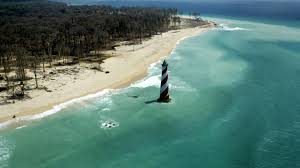Nicobar triangle: on the ₹72,000-crore project on Great Nicobar Island
Without wide consultations, Centre should not embark on the infrastructure project
The Union Tribal Affairs Ministry will be looking into the forest clearance paperwork of the ₹72,000-crore infrastructure project on Great Nicobar Island, a major initiative of the National Democratic Alliance (NDA) government, Tribal Affairs Minister Jual Oram told this newspaper. This is a significant step for the government, in its third term, as it brings to the surface the contentious and difficult choices that governments face while addressing the trilemma of infrastructure development, preserving pristine biodiversity respect and, being sensitive to the rights of the indigenous inhabitants, and tribals. The Great Nicobar Project involves developing a trans-shipment port, an international airport, township development, and a 450 MVA gas and solar-based power plant on the island. The project area is expected to cover over 130 sq. km. of pristine forest, and has been accorded a stage-1 environmental clearance — one of the mandatory prerequisites — by an expert committee. The government told Parliament in August 2023 that 9.6 lakh trees could be felled and ‘compensatory afforestation,’ for the loss of this unique rainforest ecosystem, had been planned, thousands of kilometres away, in the vastly different ecological zone of Haryana. The Galathea Bay in the Nicobar islands hosts multiple rare species including the leatherback turtle, and the project imperils their future.
The government contends that its motive is to leverage the strategic location with the Great Nicobar Island located only 90 km away from the western tip of the Malacca Strait, an important shipping route between the Indian Ocean and the South China Sea. However, critics and some of the government’s policy advisers suggest that tourism is a key imperative for the exercise. The Environment Ministry, which is a regulator of environmental policy, has opted to be secretive about the project. Details on the environmental clearance process and the appraisal process, usually a public document, have been kept under wraps. There also seems to be haste on the part of the island administration to proceed while ignoring the rights of the local tribes — the Shompen in particular — regarding consent. The National Commission for Scheduled Tribes, a constitutional body, has demanded an explanation from the district administration on these grounds. The National Green Tribunal had tasked a committee, headed by the Secretary of the Environment Ministry, to submit a report on the approval of forest clearances. This too is not public. Without transparency, it would be foolhardy for the government to attempt such a massive upheaval of the islands and it should, with its new mandate, immediately correct course.
